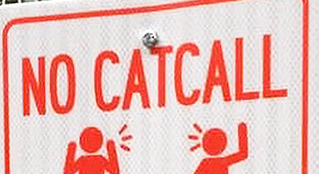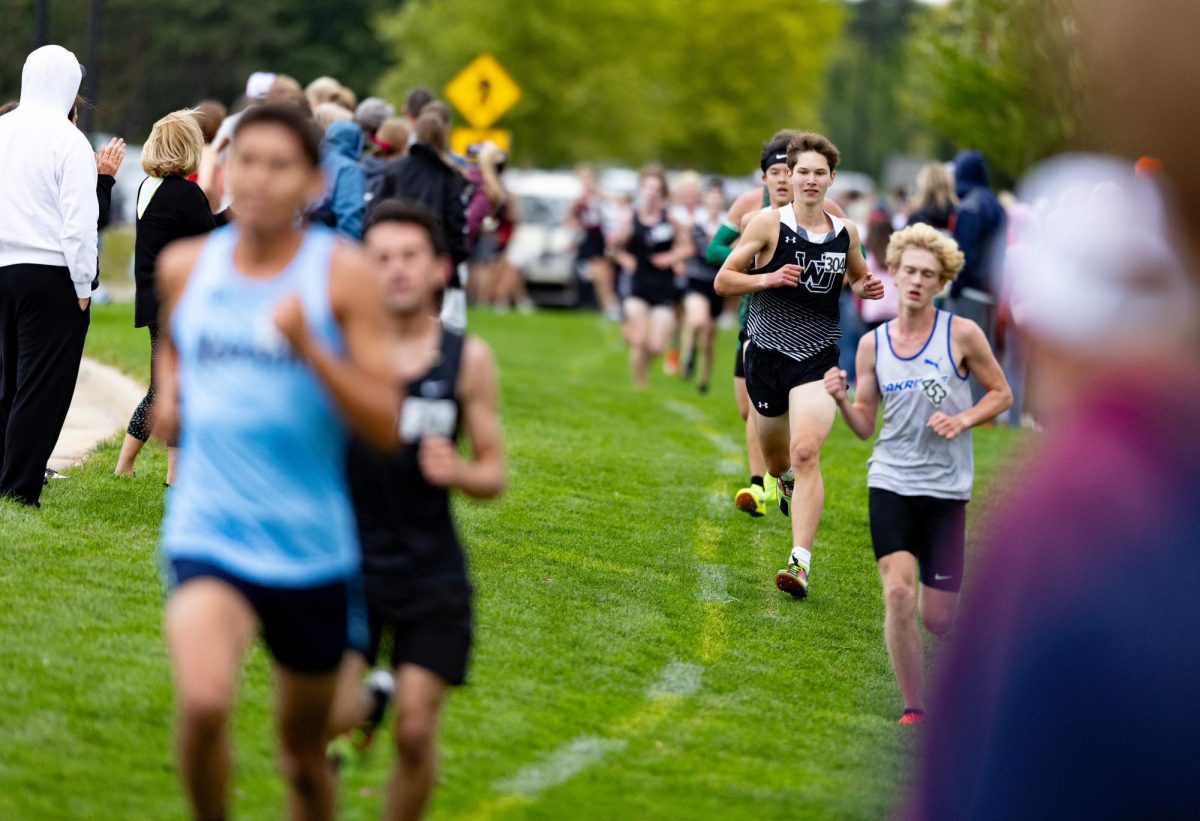It Ends Here: It’s time to stop street harassment.

November 17, 2020
Coming back from the beach, two teenage girls were walking on Ottawa Beach Road. As they walked, a cascade of teenage boys, whistled and whooped. Some even made comments on the girl’s appearance. One man leaned out of his car window and watched them walk down the street.
“This was the day I felt most uncomfortable,” Sr. Brenna Carithers said. “Nothing could have stopped it; it was literally just us being young vulnerable girls.”
Unfortunately, these incidents are not uncommon, and the statistics are startling. In a survey conducted at Cornell University, 85% of women experienced street harassment before turning 17. Street harassment is a broad term that is any form of sexual harassment in public towards others.
The harassment can include assaulting, grabbing, and catcalling (explicitly making a comment or sound of a sexual nature to someone else). Some examples of street harassment include
- honking
- slowing down to stare
- commenting on someone’s appearance
- randomly walking up to make conversation
- making inappropriate gestures
- making an explicit comment
- grabbing/touching without consent
The list goes on.
In the West Ottawa community, of 250 individuals surveyed, 62.4% have experienced street harassment. According to the survey, 83.3% of the victims identify as female. Furthermore, 98.6% of the victims are minors and experience harassment before they even reach adulthood.
Students reported that 35.1% of them experienced catcalling at school. Students should feel safe at school, but harassment creates a sense of danger on school campuses. Sr. Hannah Lock describes a time when she was catcalled at school “As I was walking, there were two guys playing basketball at the court right by South [building]… I was minding my own business when one of them yelled, ‘Hey!’ And I didn’t respond because I didn’t know them. Then, one of them said, ‘What class you got?’ I still didn’t respond. For the third time, he yelled, ‘Aye shawty in the green, what class you got?!’’ She was fed up with them yelling, so she responded, “Lunch.” Unfortunately, merely answering their questions was not good enough. “They kept asking me to go over to them and did the stereotypical cat call whistle two-three times.”
“I felt unsafe, so I started to speed walk to my car and… I locked the doors.” This was Lock’s first time getting catcalled, and she was not expecting such a disturbance during school. “[I felt]… very uncomfortable and uneasy. I felt so degraded, even though the catcall wasn’t nearly as bad as experiences other people have,” Lock said.
After the incident, Lock made changes to her life to avoid another frightful experience. “I do not walk in between buildings [during lunch] and I eat with my friend… It makes me feel a lot better and now I won’t ever [need to] walk in between buildings again.” Unfortunately, street harassment is inescapable, even in supposedly safe places.
We have both personally experienced street harassment.
Jessie:
I typically ride my bike to work during the summer. Cars honk at me while driving by or slow down and stare in the middle of the road. Most of the time, I am wearing a baggy tee-shirt and running shorts. I try to bike fast and avoid eye contact, hoping no one will notice me. Although my experience hardly compares to anyone else’s story, no one should view me as an object.
Harassers are not confined to one age group. Many women have experienced harassment from young boys as well as from adults. “When there are older men harassing you, it can be very scary,” Carithers said. “Because, they are adults, so it feels like you can’t really say anything because you’re supposed to respect adults, and since they are adults, they have a lot more power over you… If you speak out, people are more likely to believe the adult over the teenager.”
Not only do young girls feel uncomfortable, but many feel fearful at times. According to the survey, 70.5% of people in the community are afraid to walk alone at night.
Caitlin:
I was with friends sometime past sunset at a nearby park. After it got dark out, I started going back to my car. Around my car in the parking lot, there were around ten teenage boys. As I got closer, they started calling to me, making explicit comments: “Hey, you want to f***?” and whistling at me. Immediately, I turned around and went back to my friends and asked one of the boys to walk me back to my car. As soon as I was in my car, I immediately locked the doors and drove away.
Many victims will only travel with friends, stay inside when it gets dark, or carry a defense weapon because of street harassment. “I literally have a self-defense weapon on my keychain,” Carithers said. Carithers is only seventeen. Victims of street harassment feel as if they are trapped. Young girls should not feel the need to carry a self-defense item while walking down the street. However, sadly, the harassment that women face has created a dangerous reality.
The fact is, women do not take catcalling and harassment as a compliment. It is disturbing, disgusting, and inhumane. Harassment dehumanizes women and makes them feel as all that matters is if they meet society and men’s beauty standards for women.
Women should not be sexualized when they are walking to their car. Women should not be sexualized when they are walking down the street. Women should not be sexualized when they are biking to work. Women should not be sexualized when they are walking to their car.
Think twice before “complimenting” someone, is it a compliment or simply harassment?
Times up. Street harassment ends here.



